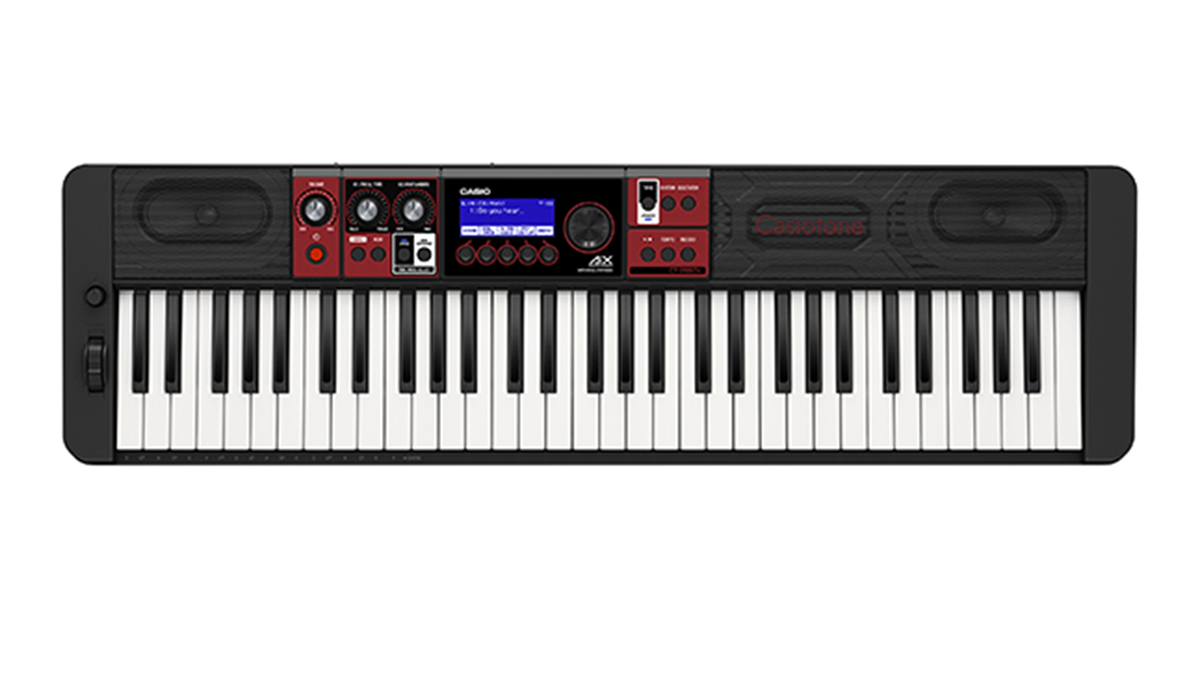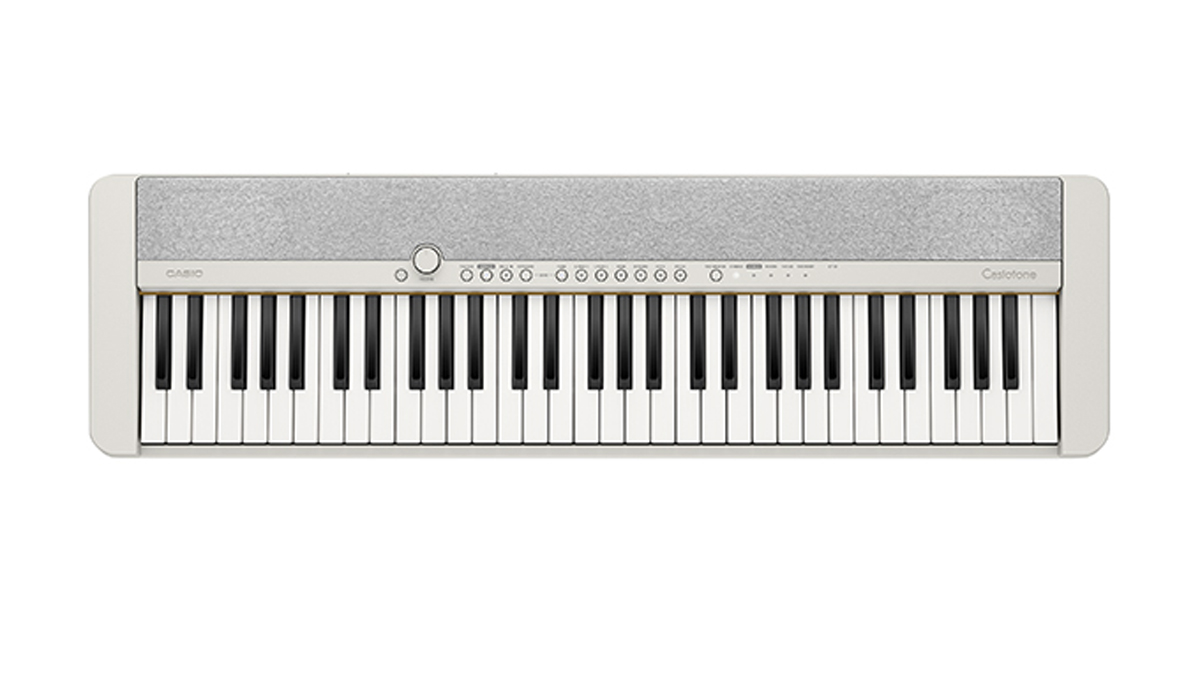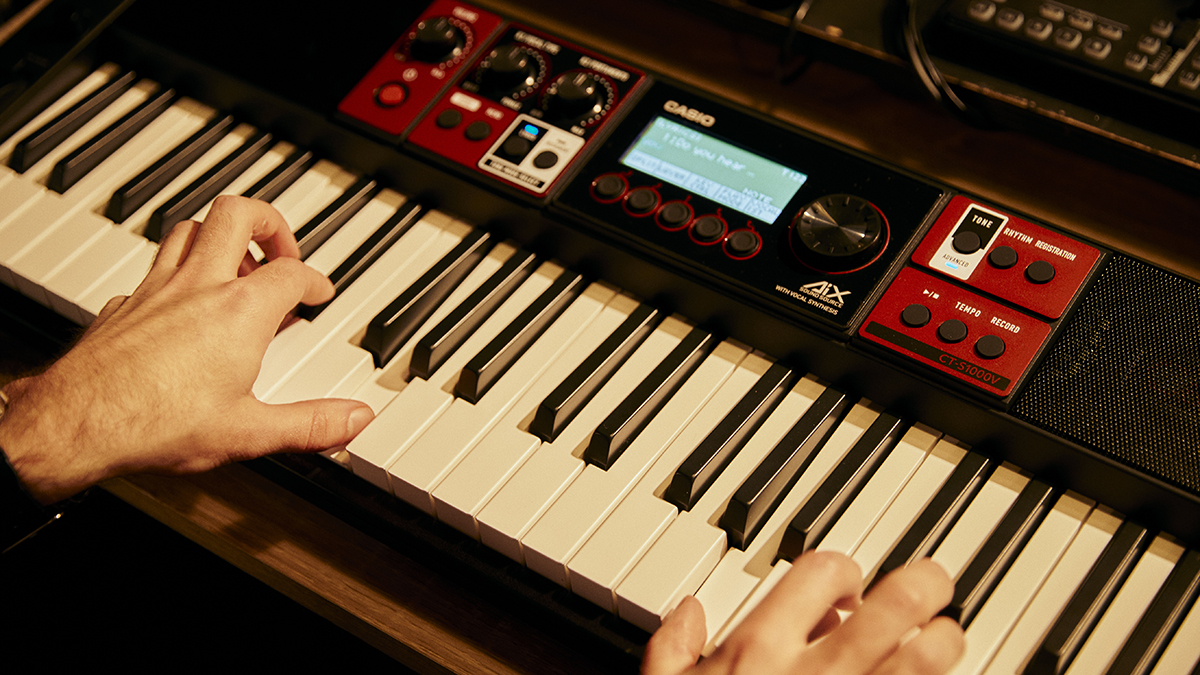MusicRadar Verdict
It doesn't perform miracles, but the Casiotone CT-S1000V is a blast to play, and the potential of its vocal synthesis technology is just begging to be tapped.
Pros
- +
If you can type it, the CT-S1000V can sing it
- +
Comes with a wide selection of high-quality keyboard sounds
- +
Great speakers
- +
Genuinely unique
Cons
- -
Transferring lyrics takes too many finger presses
- -
Do you really want auto-accompaniment features?
MusicRadar's got your back
What is it?
Vocal synthesis has become something of a final frontier for music technology developers. The sounds of analogue synths and acoustic instruments have pretty much been nailed in both hardware and software, but a plugin or keyboard that can actually ‘sing’ like a human being? Not so much.
Casio’s Casiotone CT-S1000V doesn’t promise to buck this trend completely, but it does have a rather clever trick up its sleeve. It’s billed as a Vocal Synthesis keyboard, and comes complete with 100 Lyric Tones - short vocal phrases - that can be played back polyphonically.
This can be done in either Phrase or Note mode. With the former, a single held keypress triggers the whole phrase, while the latter enables you to fire off each syllable of the selected lyric in order.
You can also choose from 20 different vocalists, including choirs, vocoder and talkbox presets, whispers and the sinister Death Voice. You can take real-time control over these with the three assignable knobs, which default to adjusting the gender/age, portamento and modulation.
There’s a dedicated pitchbend wheel, too, while the 61-note keyboard is velocity-sensitive. Settings are made on a central display with five selection buttons underneath and a jog wheel to the right.
As well as being able to play with the preset vocal phrases, you can also create your own. This is done on the companion Lyric Creator app, which is available for both Android and iOS. This enables you to type in lyrics and adjust their timing using standard musical note values, adding rests and making subtle adjustments to the pronunciation.
Once you’re happy with a lyric, you can transfer it to the keyboard via USB. It’s also possible to create your own vocalists by adding your own vocalist waveforms as WAV files and adjusting the gender, age and vibrato. You can import vocalists that others have created, too.

While vocal synthesis is the CT-S1000V’s headline feature, it’s worth noting that it’s also a more traditional home keyboard. The 800 instrument tones cover all the expected bases, and you have 64 notes of polyphony to play with. There are also effects, a master EQ, an arpeggiator, a metronome, a 6-track MIDI recorder and various accompaniment features (including 243 built-in rhythms and backing arrangements).
Dig a little deeper and you discover that the CT-S1000V also offers basic sampling functionality (a mini-jack audio input sits alongside 1/4-inch outputs and a mini-jack headphones out) and comes with an adapter that gives you wireless Bluetooth audio and MIDI.
Other supplied accessories include a power supply (the CT-S1000V can also run on six AA batteries) and a music stand.
Performance & Verdict
The CT-S1000V is one of the most curious keyboards we’ve come across in a long time, not least because it’s not immediately clear who it’s designed for. The vocal synthesis elements give it a slightly ‘cutting-edge’ vibe, but the auto-accompaniment features and built-in rhythms place it very much in home keyboard territory.
What we can say, though, is that the CT-S1000V is an awful lot of fun to play with. The included lyrics are pretty generic - examples include I want you, Got for it, Just do it, I wanna be with you (you get the general idea) - but start playing a few chords and you can quickly come up with something that could pass for a vocal hook.
This is particularly true once you get out of Phrase mode and play the syllables individually. This gives you more scope to mess with the timing, and you can set up trigger keys to adjust the syllable order. Using a sustain pedal, meanwhile, enables you to ‘hold’ certain syllables during a performance.
You’ll quickly discover that this isn’t a keyboard that’s going to deliver a convincingly ‘human’ vocal performance, but if you’re happy with something that sounds synthetic (which, let’s face it, a lot of contemporary vocal snippets do) then there’s plenty of potential here.
The process of typing and transferring your own lyrics is pretty straightforward, though we did find that the words in some of our phrases were difficult to make out when we played them back. You can go back and edit them on your phone, of course - adjusting the timing, etc - but because changes aren’t reflected in realtime, this can feel like a bit of a faff.
In fact, one of our criticisms of the Lyric Creator app would be the number of presses it takes to go through the transfer process. It’d be great if Casio could streamline this a bit in an update.
If the vocal stuff was all that the CT-S1000V had then you’d probably feel a little short-changed, but fortunately, it’s also an excellent portable keyboard. There’s a great variety of sounds, and while the keyboard action can sometimes feel a light to get the most out of them (when you're playing the electric pianos, for example), you’ve got everything you need.
Special mention should go to the speakers, which we’re led to believe are the same as those on the excellent Casiotone CT-S1. They deliver a surprising amount of punch, and are certainly good enough to be used for listening to music in a bedroom (or similar). The Bluetooth audio connectivity makes this very convenient, too.
As always, the built-in rhythms and auto-accompaniment features are going to be divisive, but they're fine as far as these things go, and you're certainly under no obligation to use them. The sampling facility, while very old-school (sounds can be recorded in directly or imported via USB drive) is another fun addition.

Casio Casiotone CT-S1
If all you want is great sounds in a lightweight and playable package, look no further than the CT-S1. Did we mention that you can get it in red, too?
Roland GO:KEYS
Roland's take on the portable keyboard concept features 61 keys, more than 500 sounds, onboard Bluetooth and a Loop Mix feature.
So, to return to our previous question, who is the CT-S1000V designed for? Despite its vocal synthesis capabilities, this still looks and feels like a home keyboard, but we think it’ll be quirky enough to find a place in a few studios, too.
In fact, given time, we suspect that this might be an instrument that picks up a cult following (it’s worth remembering just how popular Yamaha’s Vocaloid software has become in Japan). All it takes is for a big-name artist to be spotted using one, and you can be pretty sure that widespread interest will be piqued.
If you’re not bothered about the vocal stuff but like the sound of the rest of the CT-S1000V’s features, check out the CT-S500, which costs £50 less and offers precisely that. We think it’s worth spending the extra, though - there’s nothing else quite like the CT-S1000V, and it could turn out to be the keyboard that you never knew you always wanted.
- Explore our guide to the best Casio keyboards on the market
Hands-on demos
Benn Jordan
Casio
Specifications
- Dimensions: 930 x 258 x 91mm
- Weight: 4.7㎏
- Keys: 61 velocity-sensitive with three levels of touch response
- Polyphony: 64
- Number of Tones: 900 (including 100 Lyric Tones) plus 243 rhythms
- Effects: Reverb (24 + preset for each tone); Chorus (12 + preset for each tone); Delay (15 + preset for each tone); DSP (100 + preset for each tone); Master Equalizer (10 +1 user)
- Other features: Metronome, MIDI recorder, arpeggiator, sampling, auto accompaniment
- Speakers: 13 cm × 6 cm × 2 (Output: 2.5 W + 2.5 W)
- Power Supply: 12V DC
- Connectivity: Headphones mini-jack, 1/4-inch line out (L/MONO, R), 2 pedal inputs, mini-jack audio input, USB Type A, micro USB Type B, wireless Bluetooth audio/MIDI (via WU-BT10 adapter)
- Contact: Casio

I’m the Deputy Editor of MusicRadar, having worked on the site since its launch in 2007. I previously spent eight years working on our sister magazine, Computer Music. I’ve been playing the piano, gigging in bands and failing to finish tracks at home for more than 30 years, 24 of which I’ve also spent writing about music and the ever-changing technology used to make it.
“Excels at unique modulated timbres, atonal drones and microtonal sequences that reinvent themselves each time you dare to touch the synth”: Soma Laboratories Lyra-4 review
“I used everything I knew about music”: How Green Day exceeded expectations with their most ambitious song
YouTube just added AI tools that makes musicians, library music and video editors redundant










